Abstract
A method is described for the simultaneous determination of the carboxylic acid and N-acetyl-derivatives of primaquine, in plasma and urine. After oral administration of 45 mg primaquine, to five healthy volunteers, absorption was rapid, with peak primaquine levels of 153.3 +/- 23.5 ng/ml at 3 +/- 1 h, followed by an elimination half-life of 7.1 +/- 1.6 h, systemic clearance of 21.1 +/- 7.1 l/h, volume of distribution of 205 +/- 371 and cumulative urinary excretion of 1.3 +/- 0.9% of the dose. Primaquine underwent rapid conversion to the carboxylic acid metabolite of primaquine, which achieved peak levels of 1427 +/- 307 ng/ml at 7 +/- 4 h. Levels of this metabolite were sustained in excess of 1000 ng/ml for the 24 h study period, and no carboxyprimaquine was recovered in urine. N-acetyl primaquine was not detected in plasma or urine. Following [14C]-primaquine administration to one subject, plasma radioactivity levels rapidly exceeded primaquine concentrations. Plasma radioactivity was accounted for mainly as carboxyprimaquine . Though 64% of the dose was recovered over 143 h, as [14C]-radioactivity in urine, only 3.6% was due to primaquine. As neither carboxyprimaquine nor N- acetylprimaquine were detected in urine, the remaining radioactivity was due to unidentified metabolites.
Full text
PDF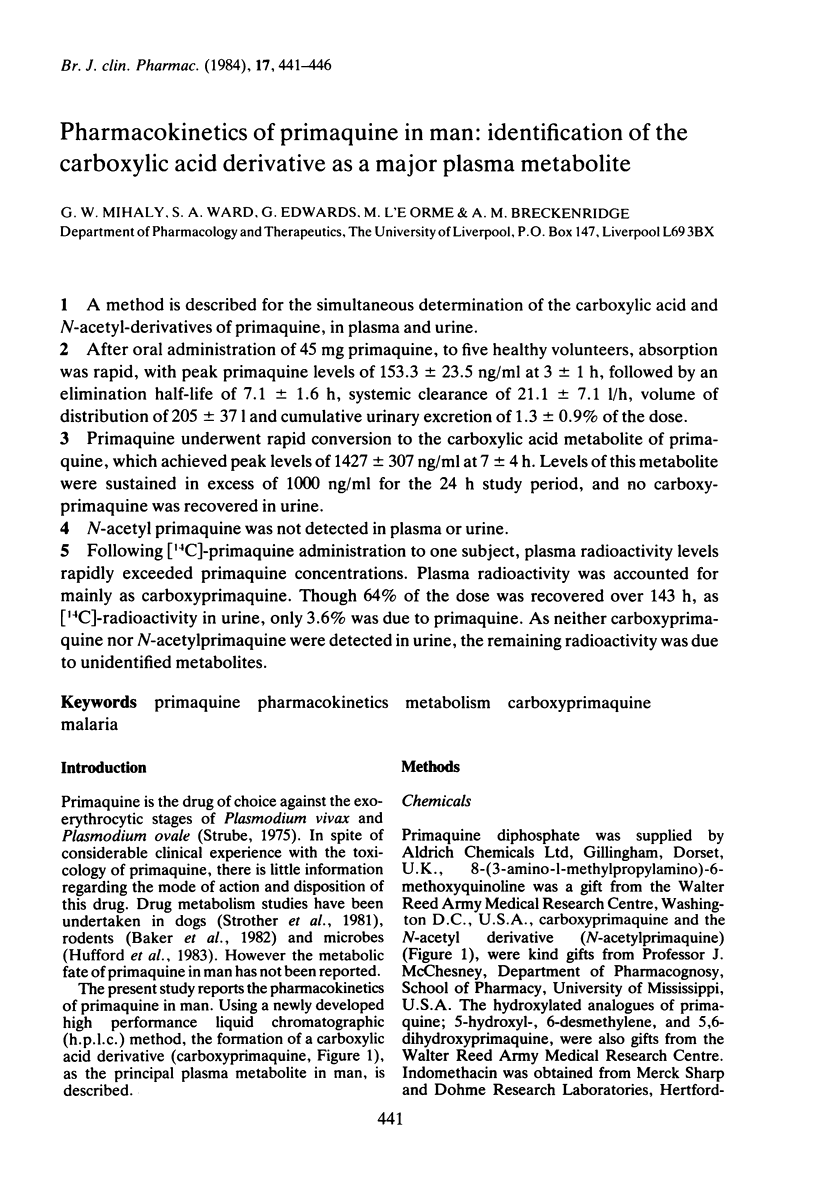
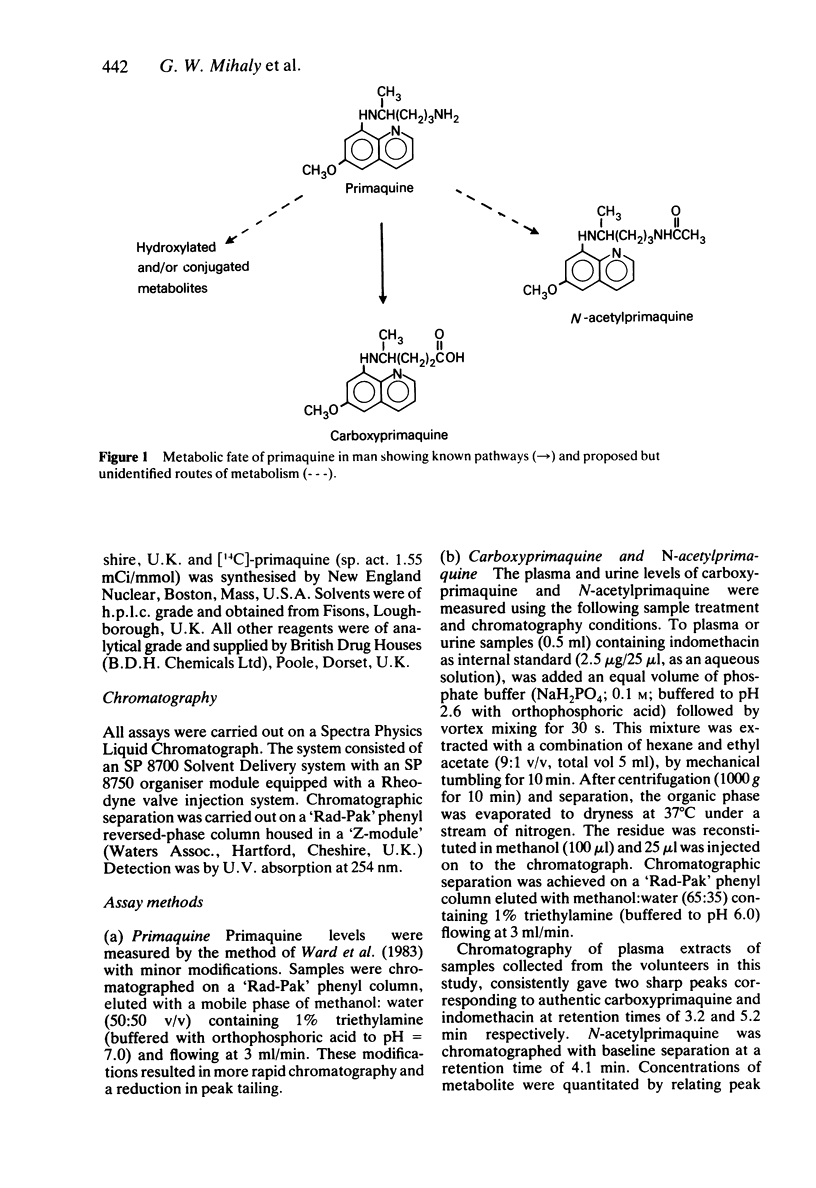
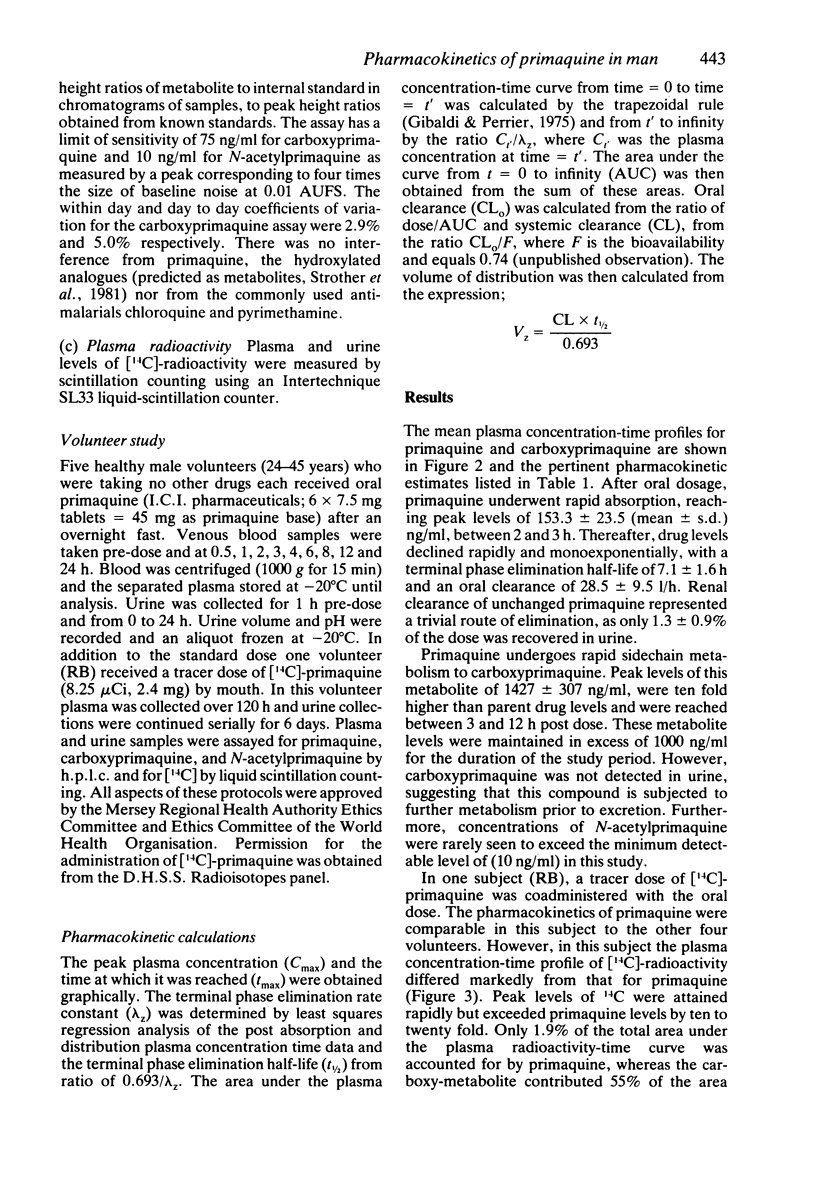
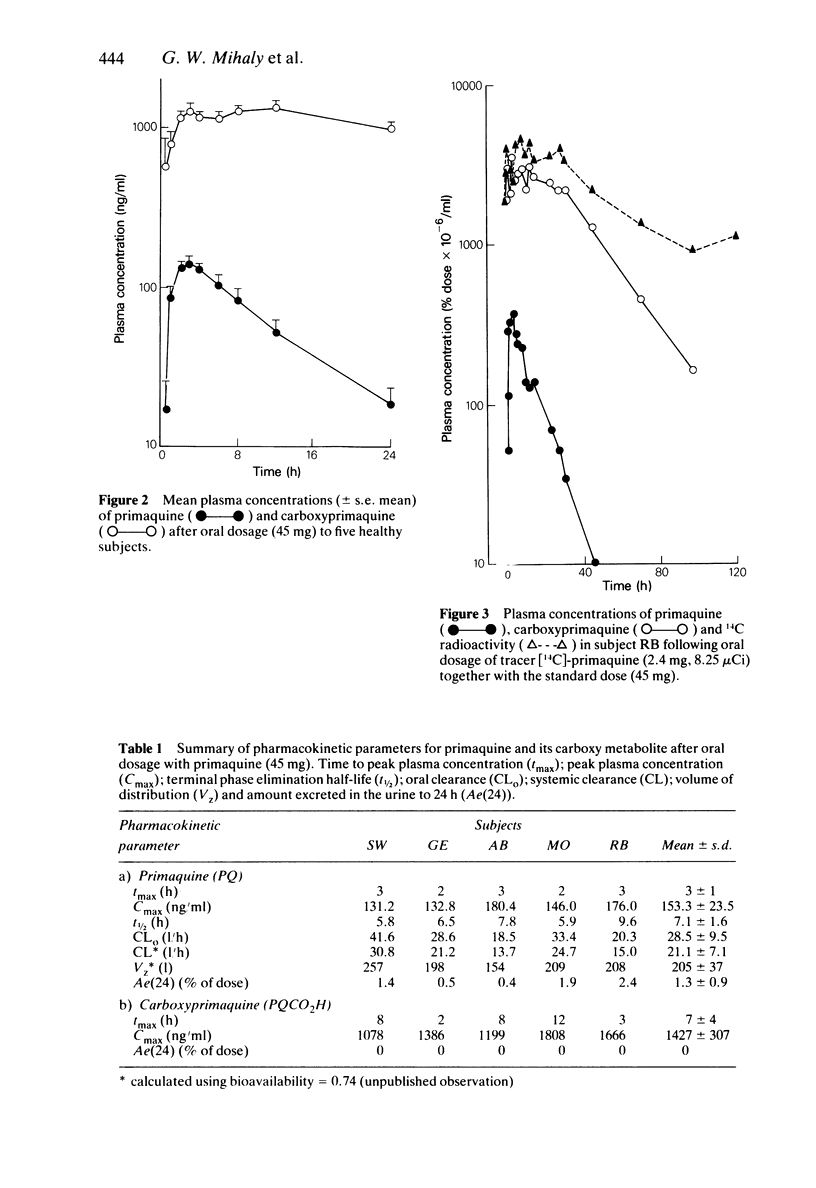
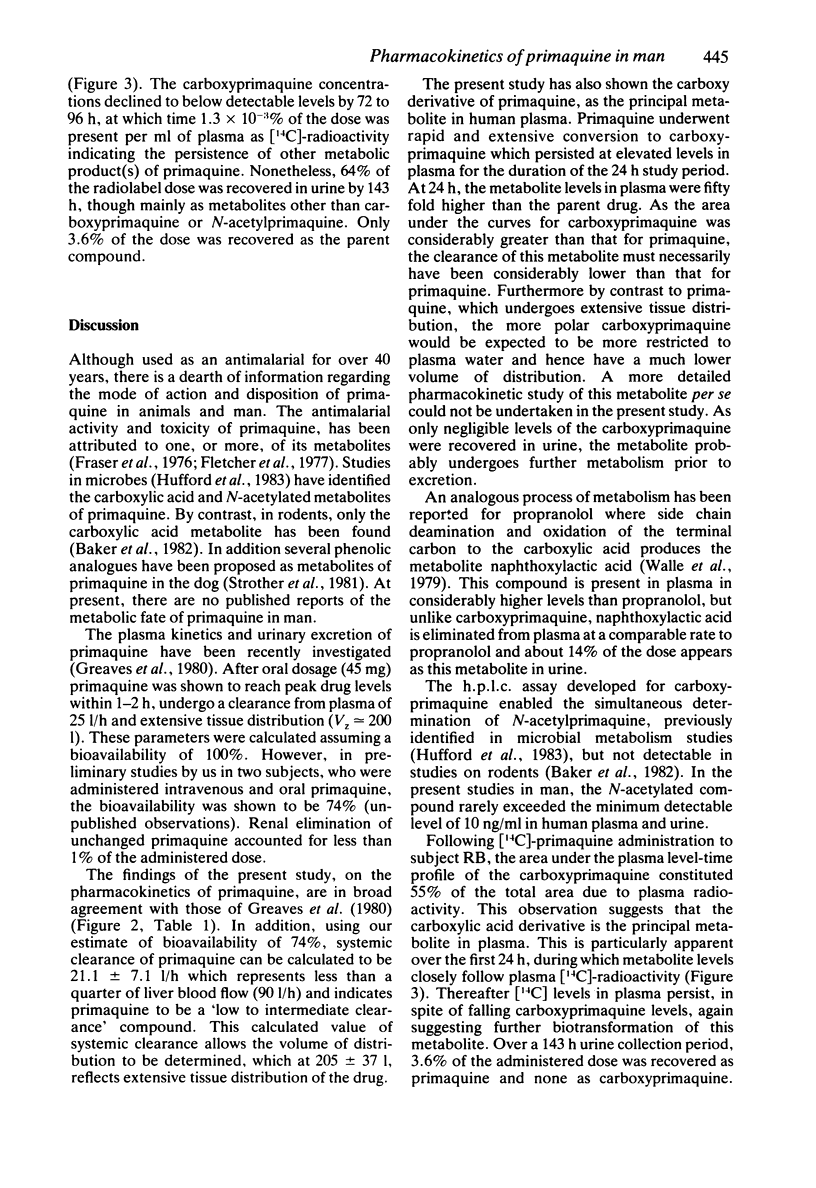
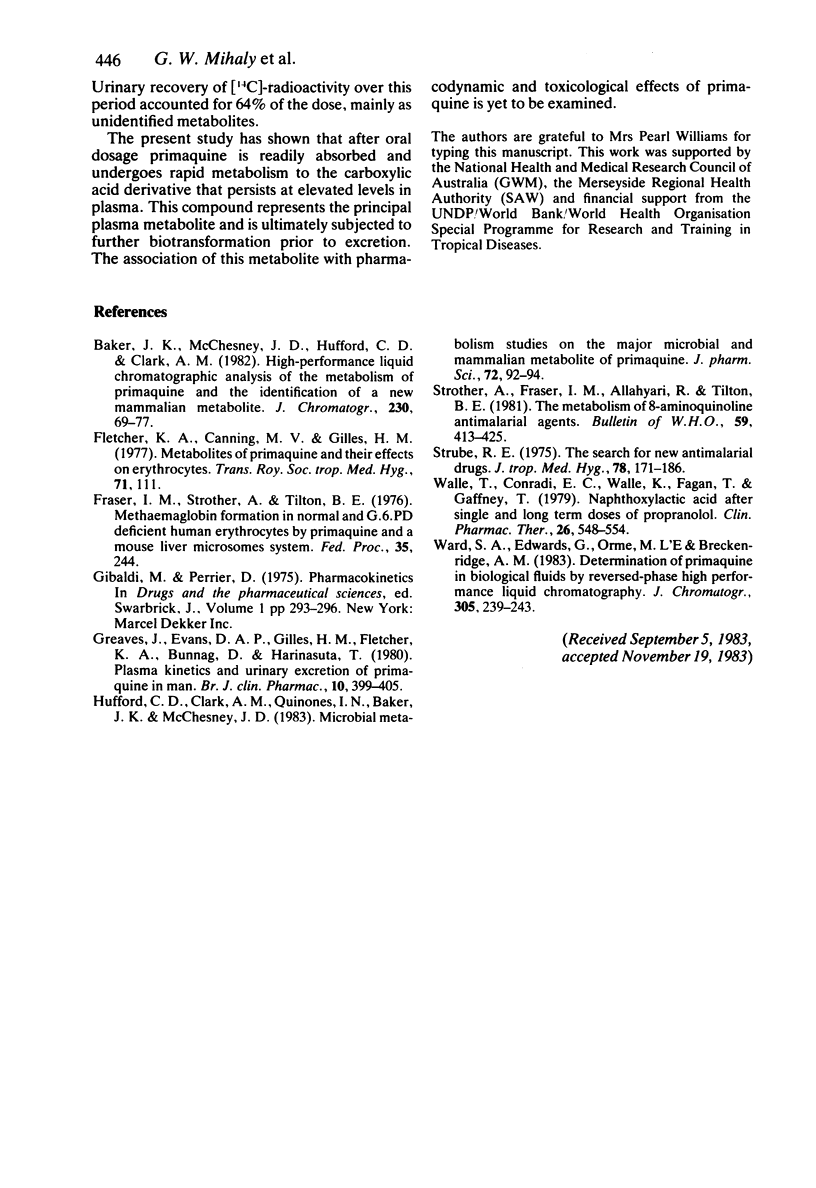
Selected References
These references are in PubMed. This may not be the complete list of references from this article.
- Baker J. K., McChesney J. D., Hufford C. D., Clark A. M. High-performance liquid chromatographic analysis of the metabolism of primaquine and the identification of a new mammalian metabolite. J Chromatogr. 1982 Jun 11;230(1):69–77. doi: 10.1016/s0378-4347(00)81431-0. [DOI] [PubMed] [Google Scholar]
- Greaves J., Evans D. A., Gilles H. M., Fletcher K. A., Bunnag D., Harinasuta T. Plasma kinetics and urinary excretion of primaquine in man. Br J Clin Pharmacol. 1980 Oct;10(4):399–404. doi: 10.1111/j.1365-2125.1980.tb01777.x. [DOI] [PMC free article] [PubMed] [Google Scholar]
- Hufford C. D., Clark A. M., Quinones I. N., Baker J. K., McChesney J. D. Microbial metabolism studies on the major microbial and mammalian metabolite of primaquine. J Pharm Sci. 1983 Jan;72(1):92–94. doi: 10.1002/jps.2600720124. [DOI] [PubMed] [Google Scholar]
- Strother A., Fraser I. M., Allahyari R., Tilton B. E. Metabolism of 8-aminoquinoline antimalarial agents. Bull World Health Organ. 1981;59(3):413–425. [PMC free article] [PubMed] [Google Scholar]
- Strube R. E. The search for new antimalarial drugs. J Trop Med Hyg. 1975 Aug;78(8):171–185. [PubMed] [Google Scholar]
- Walle T., Conradi E. C., Walle U. K., Fagan T. C., Gaffney T. E. Naphthoxylactic acid after single and long-term doses of propranolol. Clin Pharmacol Ther. 1979 Nov;26(5):548–554. doi: 10.1002/cpt1979265548. [DOI] [PubMed] [Google Scholar]
- Ward S. A., Edwards G., Orme M. L., Breckenridge A. M. Determination of primaquine in biological fluids by reversed-phase high-performance liquid chromatography. J Chromatogr. 1984 Jan 13;305(1):239–243. doi: 10.1016/s0378-4347(00)83337-x. [DOI] [PubMed] [Google Scholar]


